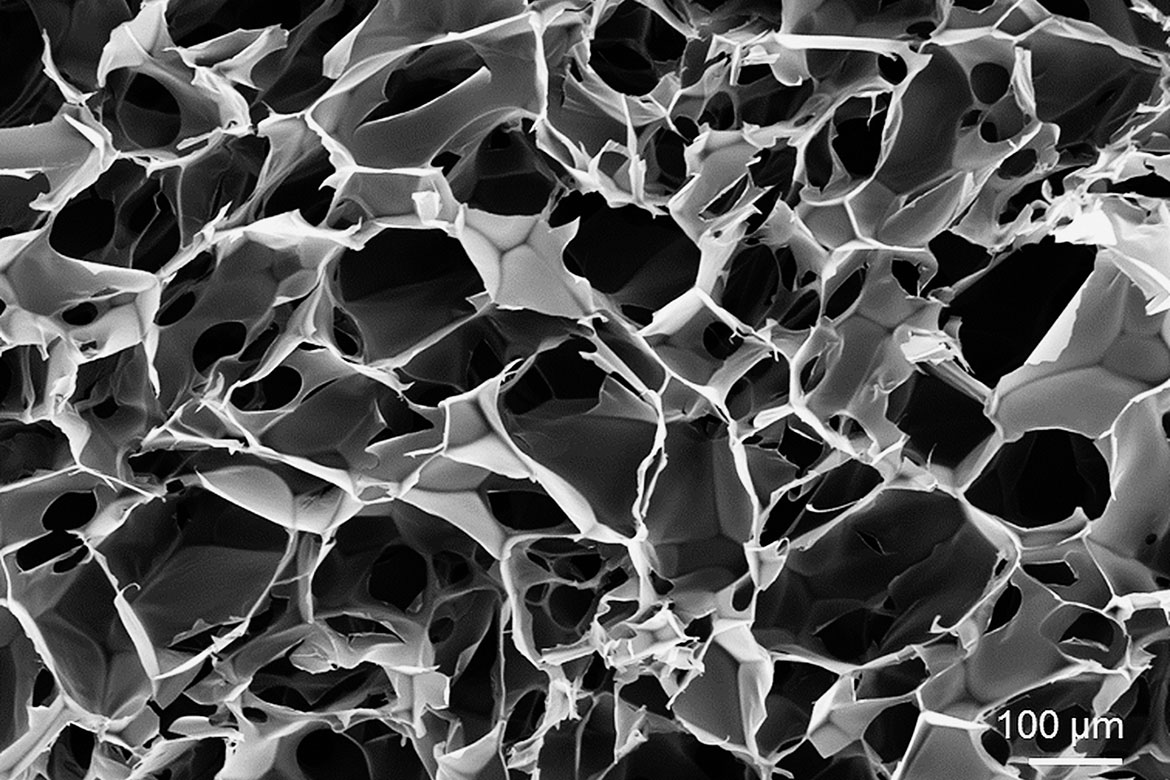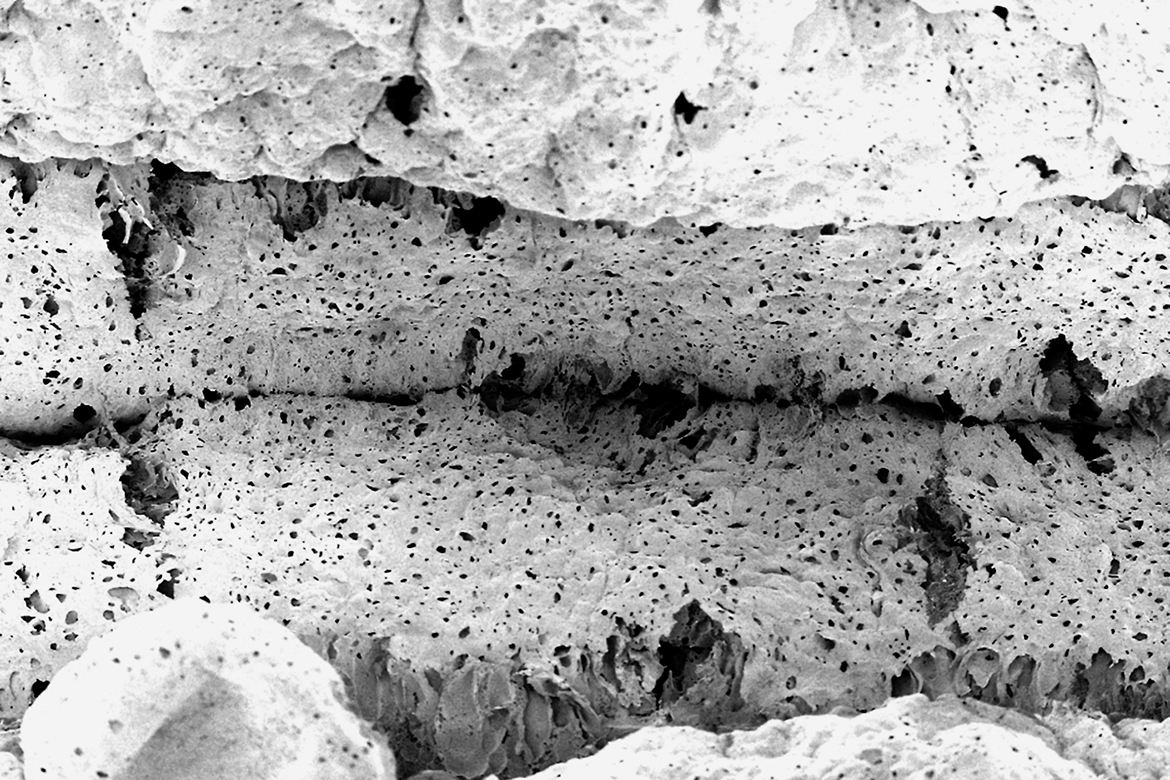Healing bones with conductive plastic
When complicated bone fractures won’t heal on their own, doctors have to fix the bone in place with screws and plates. However, a new study shows that a type of plastic called PEDOT:PSS, which is already known from other applications, has the potential to replace such metal parts. Researchers are investigating how precursor cells can be developed on this polymer. “This material looks like a sponge, and bone cells grow over it”, explains Anne Géraldine Guex. She carried out her experiments during the several years she spent researching at Imperial College in London. This polymer has up to now been used primarily in technological fields, such as in manufacturing biosensors or solar cells. It has a big advantage because it can conduct electricity. For several decades now, we’ve also known that bones heal better when they are stimulated by electricity. In her experiment, she and her team carried out observations over 28 days, monitoring the activity of the genes in mice that create the calcium deposits necessary for making bones. They wanted to see whether precursor cells would develop into mature bone cells. They also analysed both the electrical conductivity of the polymer and its consistency, to ensure that the cells could actually enter into it. “We were able to show that bone cells grow well on PEDOT:PSS”, says Guex. Nevertheless, she warns against excessive expectations, insisting that clinical applications are still a long way off. “Our study provides an initial, hopeful basis”. As a next step, she proposes testing the application on human stem cells and optimising laboratory conditions. CC BY-NC-ND

Bone cells feel at home in the PEDOT:PSS Polymer. | Image: Géraldine Guex
When complicated bone fractures won’t heal on their own, doctors have to fix the bone in place with screws and plates. However, a new study shows that a type of plastic called PEDOT:PSS, which is already known from other applications, has the potential to replace such metal parts. Researchers are investigating how precursor cells can be developed on this polymer. “This material looks like a sponge, and bone cells grow over it”, explains Anne Géraldine Guex. She carried out her experiments during the several years she spent researching at Imperial College in London.
This polymer has up to now been used primarily in technological fields, such as in manufacturing biosensors or solar cells. It has a big advantage because it can conduct electricity. For several decades now, we’ve also known that bones heal better when they are stimulated by electricity.
In her experiment, she and her team carried out observations over 28 days, monitoring the activity of the genes in mice that create the calcium deposits necessary for making bones. They wanted to see whether precursor cells would develop into mature bone cells. They also analysed both the electrical conductivity of the polymer and its consistency, to ensure that the cells could actually enter into it. “We were able to show that bone cells grow well on PEDOT:PSS”, says Guex. Nevertheless, she warns against excessive expectations, insisting that clinical applications are still a long way off. “Our study provides an initial, hopeful basis”. As a next step, she proposes testing the application on human stem cells and optimising laboratory conditions.




